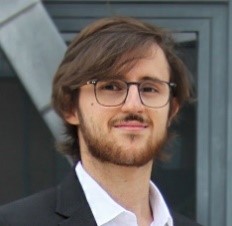Sustainable phosphorus management in the Baltic Sea Region

Augusto Bianchini
Ph.D., Associate Professor
Department of Industrial Engineering
University of Bologna
Italy

Riccardo Farneti
Temporary Research Associate
Department of Industrial Engineering
University of Bologna
Italy

Jessica Rossi
Ph.D., Temporary Research Associate
Department of Industrial Engineering
University of Bologna
Italy
Phosphorus (P) is a crucial element of the food security system as it is a key nutrient for the growth of all living organisms. Despite efforts in recent decades to make a more rational and sustainable use of it, of all the mineral P used in food production, only 15% is actually consumed by humans. Although there are losses in mining and fertiliser production, the greatest losses are associated with the cultivation of crops and the production of meat and milk.
Along the food value chain, the main phosphorus-rich waste streams are (i) animal manure; (ii) municipal wastewater and sewage sludge; and (iii) food processing. These flows constitute a major loss of money and food production capacity. Furthermore, when discharged into neighbouring ecosystems, the effect of the nutrients can cause environmental problems such as eutrophication of water bodies.
Of the many coastal areas in the world affected by eutrophication, the Baltic Sea belongs to the most impacted. Despite significant reductions in P discharges achieved through the testing of some approaches within the Helsinki Commission (HELCOM), eutrophication in the Baltic Sea still remains the largest coastal water pollution problem.
Decreasing the present value of the P load in the Baltic Sea to meet HELCOM targets is more difficult than in the past. The largest sources of P pollution are mainly diffuse sources, related to agricultural activities and animal production, which are difficult to reduce and trace. On the other hand, localized sources of P (the second category of P pollution sources) are easier to intercept, as they are concentrated and usually monitored. Recovering and reusing the valuable resources contained in these effluents could contribute both to the prevention of eutrophication and to the food security.
Unfortunately, due to a lack of legal and economic factors, nutrients recovery is not yet a common solution. In particular, the uptake of P recovery technologies in some key industrial sectors characterised by nutrients-rich effluents, such as wastewater treatment plants (WWTP), is limited by the lack of in-depth analysis on the potential, benefits and risks of industrial innovation in this field. Without methodologies and tools able to quantify commercial, environmental and social impacts at company level, companies do not have the elements to define an informed strategy on P management.
To fill this gap, the Department of Industrial Engineering of the University of Bologna channelled the knowledge gained in two EU projects – InPhos (2018–2020, EIT Raw Materials) and Prosumer (2020, EIT Climate-KIC) – into the development of an industry-oriented methodology to provide quantitative information needed by each company to explore potential P recovery paths and compare different alternatives. This analytical approach consists of four main steps: (i) Identification of corporate interests and constraints (e.g. legislative limits); (ii) Assessment of P flows within corporate boundaries through the application of an innovative visualisation tool, ViVACETM, developed by the University’s Department of Industrial Engineering to assess circular business models; (iii) Cost assessment through the Net Present Value (NPV) method; (iv) Sustainability assessment through industry Key Performance Indicators.
The methodology was applied to an Italian food company that has already installed a large-scale P recovery technology based on struvite precipitation. The application of the ViVACE tool to assess the annual P fluxes in the food processing plant showed that less than 50% of the P contained in the raw materials remains in the final products, while the recovery technology reduces the P concentration in the wastewater by about 80%. According to the NPV method, economic feasibility is not ensured, as the selling price of struvite is not competitive when compared to the cost of primary P.
The identification of the potential for P recovery and re-use at company level (through the proposed methodology) would also facilitate the definition of suitable and tailor-made policies and financial instruments to respond to the needs and specialisation of companies in a specific geographical area, and ensuring the environmental and economic sustainability and thus allowing the dissemination of P recovery at industrial level.
In conclusion, as eutrophication has an impact on environment, economy and human health (the three pillars of sustainability), a regulatory plan supporting the cross-cutting use of fiscal incentives, policies and research activities is therefore needed to incentivise the reduction, recovery and re-use of P. Fortunately, recent European regulations and directives show an increasing focus on nutrient recovery and wastewater treatment plants, while the publication of the STRUBIAS criteria, following the proposals and actions of the European Sustainable Phosphorous Platform’s (ESPP), enables the use of precipitated phosphates (such as struvite) as fertilising products in EU.
E-mail: augusto.bianchini@unibo.it
Expert article 3187
>Back to Baltic Rim Economies 1/2022
To receive the Baltic Rim Economies review free of charge, you may register to the mailing list.
The review is published 4-6 times a year.
